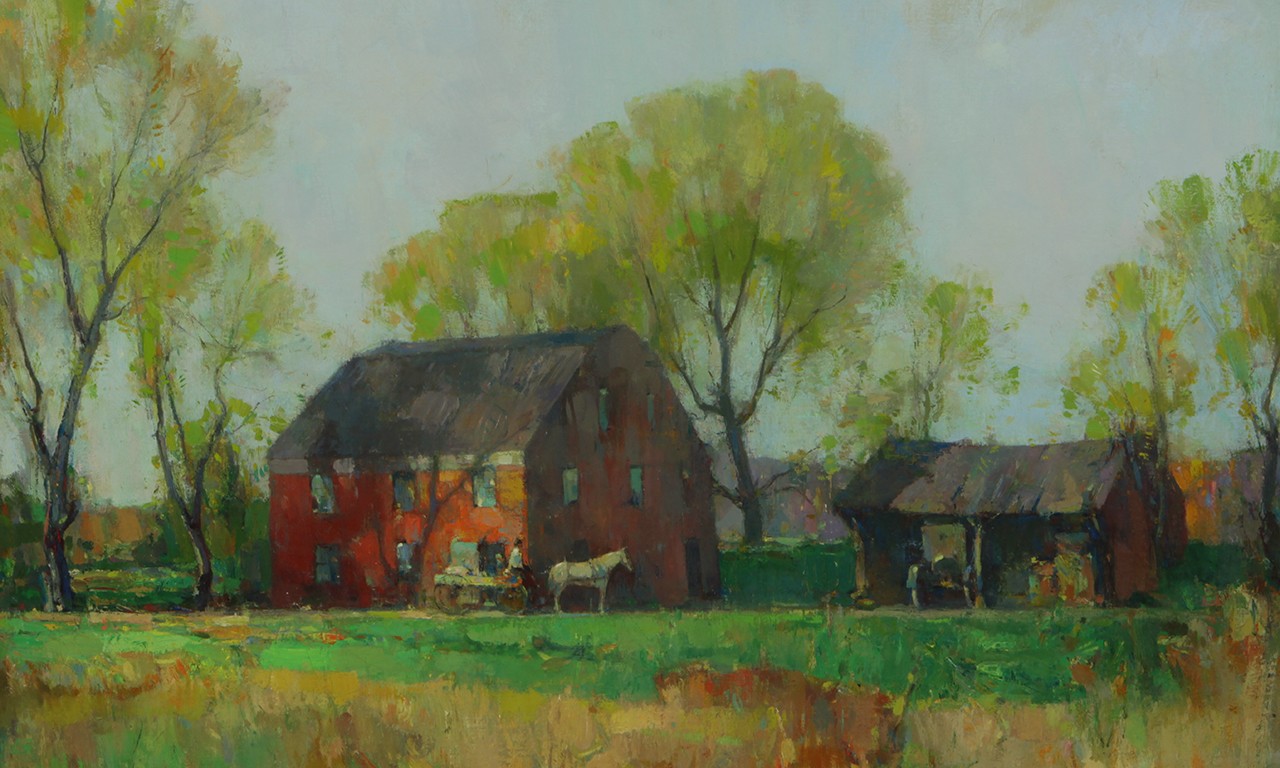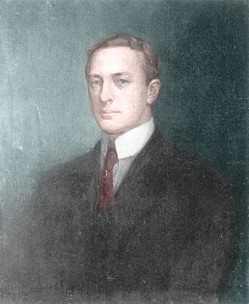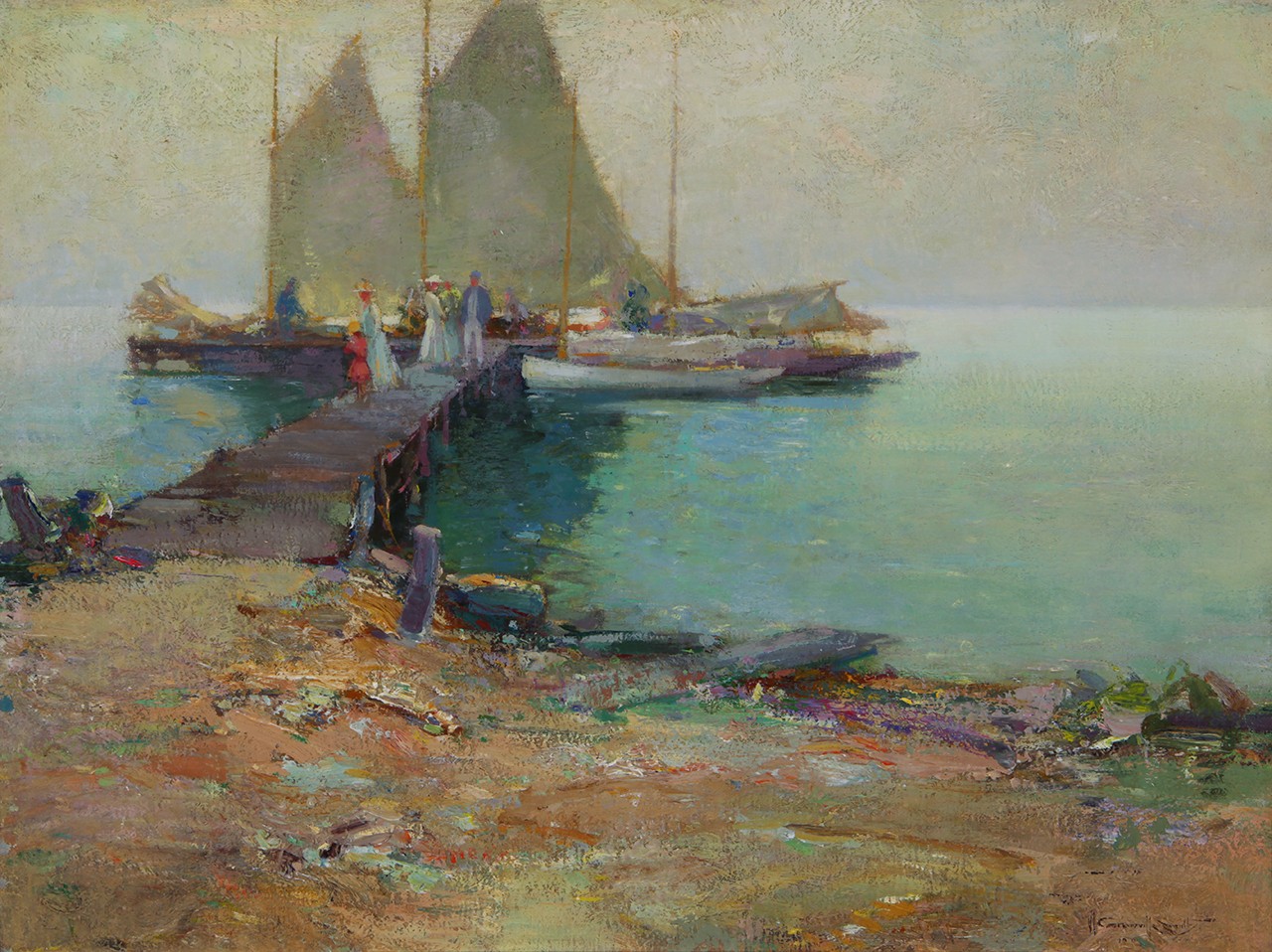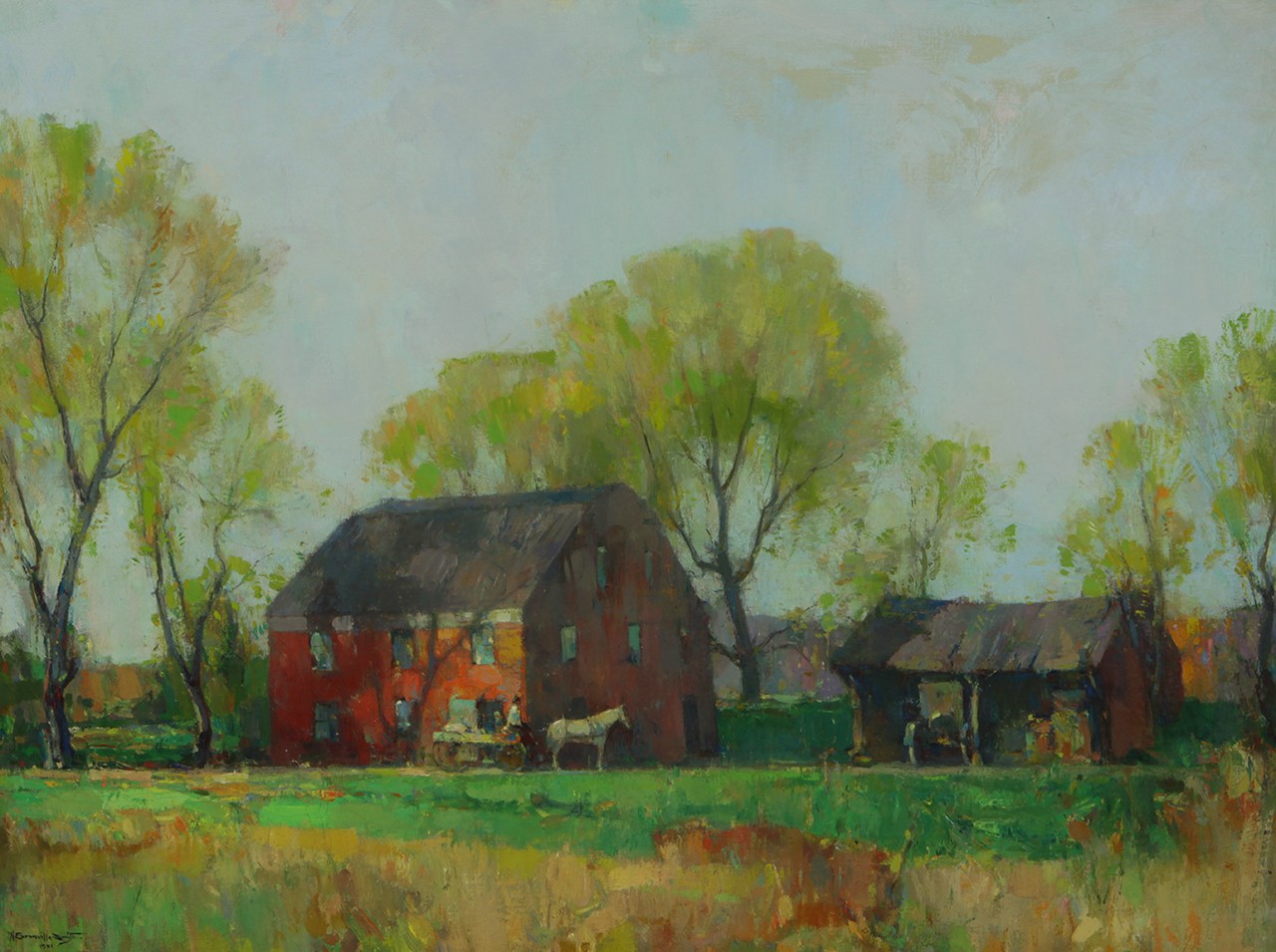 |
Detail of F7667
Martha C. Stevens Memorial Art Collection |
Gloom and Bloom
While the Bowers Blog tends to feature Southern Californian painters, there is a surprising variety of works by non-Californian artists in the museum’s collection. Searching our Fine Art Department for the dichotomous pairing of a gloomy and sunny painting—it seemed only appropriate given that most of our recent days here in Southern California have followed a trajectory from one to the other—these two paintings by Walter Granville-Smith, a New York, New York illustrator and painter, fit the bill. Though he is certainly not a household name, during his own lifetime he achieved a degree of prestige in large part through his fluid use of mediums and keen observations of nature. In this post we look at his life and work through the context of the two featured paintings.
 |
| Self portrait of Walter Granville-Smith, late 19th century |
Gran. Smith
Walter Granville Smith was born in a small town in Washington County, New York which, intriguingly, bore his middle name. It is unclear whether he was a descendant of Granville’s founders or if his parents were just so proud to be from Granville that they bestowed the name upon him. His brother William Barnette was certainly not named for his birth city. Whatever the case, to distinguish himself from the plethora of Smiths painting in New York around the turn of the 20th century, he decided to legally change his name to be hyphenated. His journey to working in New York City started at a relatively young age when his family moved to Newark, New Jersey. It was there that he attended the aptly named Newark Academy and trained under Dr. David McClure. Wanting to further his studies, he moved to the capital of arts in the United States: New York. Through the Art Students League of New York and other organizations he would go on to learn from Walter Satterlee, Willard Metcalf, and James Carroll Beckwith.
Illustrious Career
The artist’s biggest claim to fame is that he was the first illustrator in the United States to have a machine-colored illustration in a magazine. The late 19th century saw several developments in printing which allowed for chromolithography to be practiced on a wide scale. The honor of the first periodical to include such an illustration goes to Godey's Magazine which in 1893 printed a color lithograph by Granville-Smith of Gertrude Asherton’s The Christmas Witch—presumably based on la Befana, an old woman of folklore who gives Italian children gifts of the eve of Epiphany. It is a shame that this historic illustration may now be lost to time. Granville-Smith started his career out primarily working as a magazine illustrator. His works were published in many of the most important publications of the time, including Harper’s, Scribner’s, Century, Collier’s, and others.
 |
The Boat Landing, 1915
Walter Granville-Smith (American, 1870-1938)
Oil on canvas; 18 x 24 in.
F7705
Martha C. Stevens Memorial Art Collection |
Mixed Media
His passion, among at least a few others such as deep-sea fishing, was not illustration but painting. In the early 1900s Granville-Smith began entering competitions and steadily winning prestigious awards from the National Academy of Design, National Arts Club, and Salmagundi Club. As it happens, the food-named club was headed by the artist from 1924-’26. Given all this, it is perhaps curious that he was described by a former Bowers curator as “a third-tier East Coast Impressionist.” That summary would be more damning had they not followed their evaluation by stating that the two works in the museum’s collections are particularly fine showings. But where Granville-Smith may have fallen short of being the best, he dabbled in an impressive array of mediums, from charcoal to watercolor. This explains why he was mostly known for his oil paintings, but was an active member of the American Water Color Society.
 |
The Mill, 1921
Walter Granville-Smith (American, 1870-1938)
Oil on canvas; 30 x 40 in.
F7667
Martha C. Stevens Memorial Art Collection |
In True Salmagundi Fashion
True to the theme of this post, Graville-Smith's subject matter and style could vary more than the Californian sky in May. He painted the Northeast of the United States in plein air, on land and sea. The earlier of these two Bowers paintings is his 1915 work, The Boat Landing. His impressionistic style is regarded as having been influenced by a trip to Europe as a young man, and we can see that this painting is demonstrative of the Tonalist style which is attributed to his oils. Though also stylized in its depiction, Granville-Smith’s The Mill is impressive in its departure from the earlier work. Vastly different brush strokes, horizon lines, palettes, and more evidence—like his grasp of many different mediums—that Granville-Smith was many painters in one.
Text and images may be under copyright. Please contact Collection Department for permission to use. References are available on request. Information subject to change upon further research.





Comments